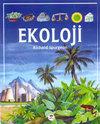生态皮革:用金属工业废料中获得的钛鞣材料生产无铬皮革的性能
Q3 Environmental Science
引用次数: 21
摘要
本文研究了从金属工业废料中提取的一种新型钛鞣剂(TMW/2)在生产无铬生态革中的应用,通过不同鞣剂用量的试验,比较了鞣革的理化性能。分别用1%、2.5%、5%、7.5%、10%的活性钛鞣制材料进行鞣制。考察了鞣革的钛含量、氧化铬含量、甲醛含量、收缩温度、pH值、灰分含量和脂肪含量,以测定鞣革的化学性质。同时进行了拉伸强度、断裂伸长率、撕裂强度和颜色测量试验,以考察其物理性能。钛鞣皮的平均收缩温度为79.5℃,颜色比铬鞣皮偏黄。其抗拉强度与铬革相近,但断裂伸长率较低,抗撕裂性较高。在鞣制过程中,钛鞣制材料的用量为2.5%是非常理想的,以达到不同皮革类型(如室内装饰革、汽车革和鞋面革)所需的最佳性能。因此,我们的研究结果表明,考虑到所得革的视觉、物理和化学性能,这种新型钛鞣剂可以作为一种替代鞣料用于生产无铬生态革。本文章由计算机程序翻译,如有差异,请以英文原文为准。
Eco-Leather: Properties of Chromium-Free Leathers Produced with Titanium Tanning Materials Obtained from the Wastes of the Metal Industry
In this research, a new titanium tanning agent (TMW/2) obtained from the wastes of the metal industry was investigated in the production of chromium free eco-leather, by experimenting with various amounts of tanning agent and comparing the physical and chemical properties of the tanned leathers. The tanning process was performed with different concentrations of active titanium tanning material such as 1%, 2.5%, 5%, 7.5%, and 10%. The titanium content, chromium oxide content, formaldehyde content, shrinkage temperature, pH value, ash content, and fat content of the tanned leathers were investigated for the determination of chemical characterization. The tensile strength, elongation at break, tear strength, and colour measurement tests were also carried out for investigating the physical properties. The titanium tanned leathers had a mean shrinkage temperature of 79.5oC and more yellowish colour than the chromium tanned leathers. Their tensile strength properties were found similar with chromium leathers, while the elongation at break was found to be lower and tearing resistance was higher. The usage amount of 2.5% could be perfectly advised for the tanning process based on the titanium tanning material for achieving optimal properties required from different leather types such as upholstery, automotive and shoe upper leathers. Consequently, our results showed that this new titanium tanning agent could be used as an alternative tanning material in the production of chromium free eco-leathers considering the visual, physical, and chemical properties of resultant leathers.
求助全文
通过发布文献求助,成功后即可免费获取论文全文。
去求助
来源期刊

Ekoloji
环境科学-生态学
CiteScore
1.10
自引率
0.00%
发文量
0
审稿时长
>12 weeks
期刊介绍:
Cessation. Ekoloji is an international journal that focuses on papers that report results from original research on all disciplines engaged in the field of environmental research. We welcome articles that cover the entire spectrum of environmental problems and environmental pollutants, whether chemical, biological or physical. Its coverage extends to all environmentally related issues: air and water pollution, solid waste, noise, recycling, natural resources, ecology and environmental protection. It includes articles on basic and applied environmental pollution research, including environmental engineering and environmental health. All types of pollution are covered, including atmospheric pollutants, detergents, fertilizers, industrial effluents, metals, mining wastes, oil, pesticides, plastics, radioactive materials and sewage. It also includes research papers on ecological and environmental issues such as climate change, biodiversity. The primary criteria for publication are scientific quality and ecological/environmental significance.
The journal will be read and contributed to by biologists, applied ecologists, environmental scientists, natural resource specialists, environmental engineers, environmental health specialists, agro-ecologists, veterinaries, agricultural engineers, landscape planners and designers. The journal welcomes full "research papers" and short "research notes", only in the English language.
 求助内容:
求助内容: 应助结果提醒方式:
应助结果提醒方式:


